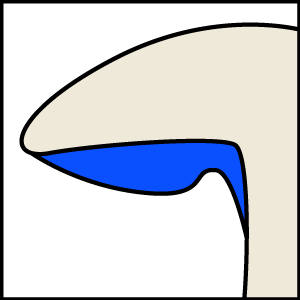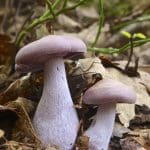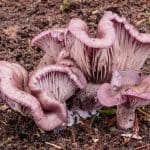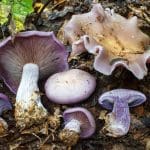Wood Blewit / Autumn / Edible
Welcome to a world of culinary delight as we celebrate the savory treasures of the Wood Blewit (Lepista nuda).
Join us on a journey where gastronomy meets indulgence. With its captivating lilac cap and delicate gills, the Wood Blewit stands as a true culinary gem.
Learn to identify its unique features, discover its preferred habitats, and delve into the culinary wonders it offers. From its tender texture to its delightful, earthy flavor, this mushroom has the power to elevate your culinary creations to extraordinary heights. Whether you are an experienced forager or an adventurous home cook, let the Wood Blewit inspire your culinary endeavors and tantalize your taste buds with its marvelous flavors.
Embrace the abundance of nature’s bounty as we celebrate the enchanting delights that lie within the Wood Blewit. Get ready to embark on a flavor-filled journey as we explore the captivating culinary possibilities offered by this remarkable fungus.
Common Names
Wood Blewit
Botanical Name
Lepista (clitocybe) Nuda
Meaning of Botanical Name
Lepista meaning goblet referring to the funnel shape of mature specimens, Nuda meaning naked
Scientific Classification:
Kingdom: Fungi,
Division:Basidiomycota,
Class: Agaricomycetes,
Order: Agaricales,
Family: Tricholomataceae
Genus: Lepista
Known Hazards
Can cause gastric upset if not cooked
Could be confused with
Violet webcap which has the classic webbing that covers the immature gills and then holds reminants of the webbing on the stem, the spores of the Violet Webcap is also Rusty brown instead of whitish pink of the Wood Blewit
Food of
Insect larvae
Range and Distribution
Common throughout Britain and Ireland, Europe, North America
Habitat
Grows often in rings on leaf litter
Physical Characteristics of the Wood Blewit
Cap
Buff brown caps with a violet tinge, the surface of the cap is almost translucent and you can often see lines when maggots have nibbled the flesh, with age the cap can become wavy at the edge and funnel shaped.
Gills
The gills are a pale violet colour, crowded and sinuate.

Stem
The stem often has a faint vertical striated pattern leading down to a bulbous base which has often got fluffy white mycelium attached.
Smell
This mushroom has a slightly perfumy smell
Spores
Pinkish-white spore print.
Edible Uses
Cooked well this mushroom is delicious going well with pasta, soups, stews etc.
Extra info
This mushroom can occasionally be found all year round though most often November and December








